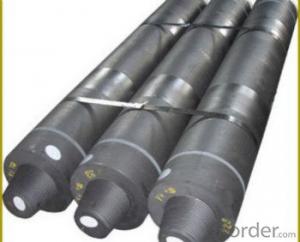When it comes to the heart of the steel industry, graphite electrodes are the unsung heroes. These cylindrical wonder-sticks are the backbone of electric arc furnaces, playing a crucial role in the production of steel. So, if you’re in the market for graphite electrodes, you’ve come to the right place. We’re about to dive into a world of carbon-based marvels that will light up your steel production process.
First things first, let’s talk about the raw material – graphite. It’s a form of carbon that’s as versatile as it is abundant. Known for its high resistance to heat and electrical conductivity, graphite is the go-to for creating these electrodes. But not all graphite is created equal. There are different types, each with its own set of properties that make it suitable for different applications.
Natural graphite and synthetic graphite are the two main types you’ll encounter. Natural graphite is just as the name suggests – it’s derived directly from the earth’s crust. It’s known for its purity and crystalline structure, which makes it a favorite for high-quality electrodes. On the other hand, synthetic graphite is man-made, produced through a series of chemical and heat treatment processes. It’s more uniform in structure, which can be an advantage for certain applications, but it can also be more expensive.
Now, let’s get down to the nitty-gritty of electrode specifications. You’ll want to consider the diameter, which is a straightforward measurement, but it’s essential for matching the electrode to your furnace. The length is another critical factor, as it affects the electrode’s consumption rate and performance. A longer electrode will last longer, but it may also be more challenging to handle.
The ultimate factor in electrode performance is the quality of the graphite itself. Look for electrodes with a high density and fine grain size. This means they’ll be more durable and less prone to breaking. You’ll also want to check the ash content – lower is better, as higher ash content can lead to more electrode wear and shorter service life.
As you’re shopping around, you’ll notice that there are various grades of graphite electrodes, typically classified by their resistance to oxidation and thermal shock. The higher the grade, the better the electrode will perform under stress. But remember, a higher grade doesn’t always mean it’s the best fit for your needs. It’s all about finding the right balance between performance and cost.
Now, let’s talk about the real-world application. When it’t the time to replace an electrode, you want to make sure you’re doing it right. Proper handling and storage are key to prolonging the life of your electrodes. Keep them dry, avoid mechanical damage, and store them vertically to prevent warping. And when it’s time to install a new electrode, make sure it’s clean and free of any contaminants that could affect performance.
Maintenance is another area where you can’t afford to slack off. Regular inspections can help you catch any issues early, such as cracks or deformations, and address them before they become bigger problems. And don’t forget about the electrode’s connection to the power source – a poor connection can lead to suboptimal performance or even damage to the electrode.
In the world of graphite electrodes, there’s a lot to consider, but with the right knowledge and attention to detail, you can make an informed decision that will keep your steel production running smoothly. Whether you’re a seasoned pro or just starting out, the key is to understand the nuances of these carbon creations and how they can best serve your operation.
So, as you navigate the market for graphite electrodes, remember these key points: know your furnace’s needs, understand the different types of graphite, consider the specifications, and never neglect proper handling, storage, and maintenance. With these insights, you’ll be well on your way to selecting the perfect graphite electrodes for your steel production process. And who knows, you might even develop a newfound appreciation for these unsung heroes of the steel industry.

